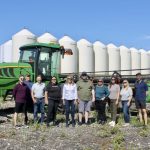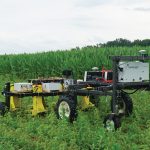
Tag Archives Technology

The way we talk about digital agriculture obscures interests behind it, says author
Facebook users pay for use with data. Farmers pay with data and for using it

‘Innovation Farms’ to allow agricultural technology testing on commercial operation
Ability to vet tech for potential ROI may benefit his farm and his customers says Rutherford Farms owner

Topigs Norsvin to open new nucleus barn
Nucleus site marks deeper Manitoba roots for global pig genetics company
Guest Editorial: Big food investments growing in agriculture

Virtual fence systems for livestock could be the next breakthrough
Though this technology is taking off in Europe and being studied here, it’s still early days

App to help Squeal on Pigs
Manitoba Pork hopes Farm Health Guardian will help streamline the reporting process for wild pigs

B.C. to back Indigenous food system projects
New program taking applications starting Monday

Comment: Innovation is improving yields and stewardship
Recent field day demonstrated some of the latest technology

Comment: Rise of precision agriculture exposes food system to new threats
There are pressing reasons to adopt new technology, but real risks too

Ironing out autonomous logistics
AgRobotics Working Group field day shows challenges, benefits of autonomous equipment


